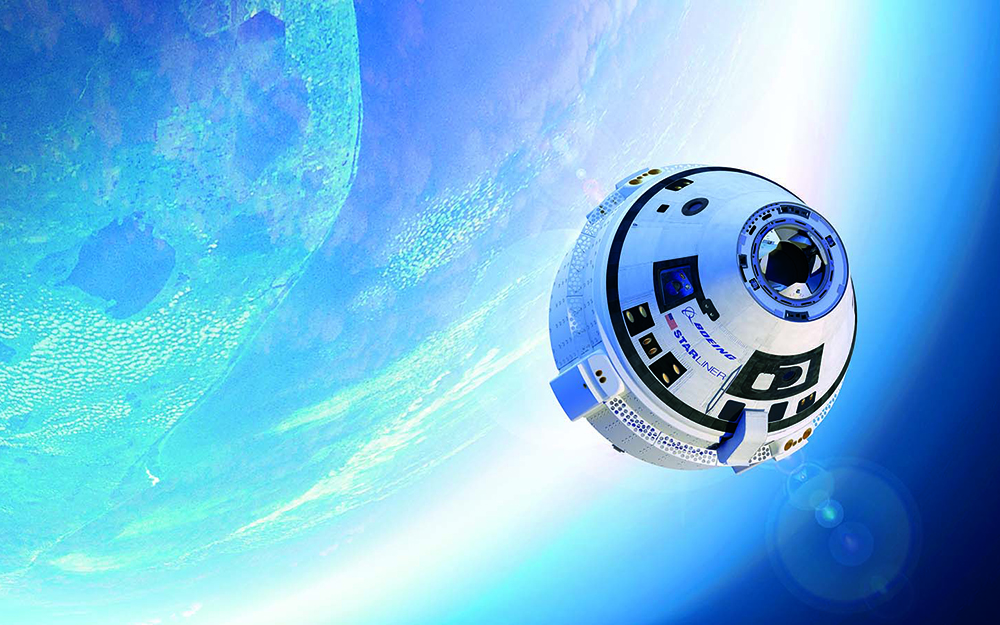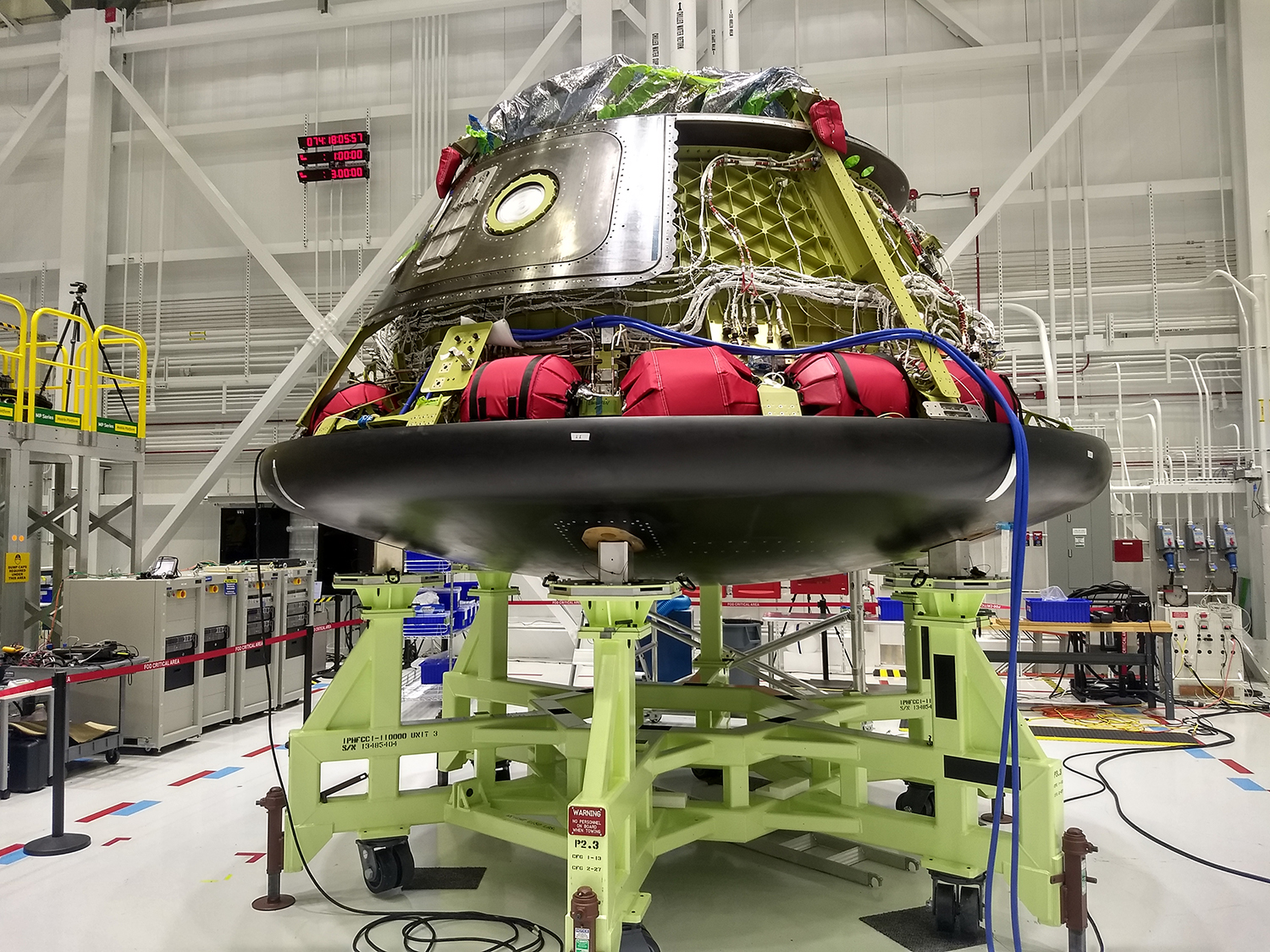Could Boeing's 'Starliner' Spacecraft Be a Next Step for Reaching the Moon and Beyond?

WASHINGTON — Picture this: A team of space travelers blasts off from Earth in a fully automated shuttle that carries them to an outpost orbiting around the moon, where they will embark on a voyage to Mars.
Though it sounds like science fiction, this fantastic journey may be closer than you think: An automated spacecraft designed to transport people into low Earth orbit could be ready for its maiden (uncrewed) voyage as early as this summer.
The new spacecraft, called the Crew Space Transportation (CST)-100 Starliner, is being developed in partnership with NASA by a private company generally associated with commercial airplanes: Boeing. The Starliner is capable of carrying up to seven passengers as far as the International Space Station (ISS) in low Earth orbit.
But that milestone will be just the first step toward eventually flying travelers to the moon and then Mars, experts here at the Future Con panel "Intergalactic to Planetary: Science Fiction to Science Fact" told audience members on March 30. [How to Get to the Moon in 5 'Small' Steps]
Starliner is intended to be the world's first commercial space vehicle, a reusable capsule designed for land-based returns. It will also be fully autonomous, to reduce training time for its crews, according to the project website.
Next stop: Mars
Starliner will initially carry astronauts and science experiments to the ISS, panelist and Boeing representative Tony Castilleja Jr.told the audience. The spacecraft's automated flight system requires only one astronaut to fly it, using tablets and touch screens to interact with the mostly self-piloting vehicle, said panelist Jim May, a Boeing software engineer.

Once Starliner has ferried people as far as the ISS, humans would be one step closer to establishing an orbiting base near the moon — the final outpost before the long journey to Mars, Castilleja said. That outpost could help launch missions that would first explore Mars from orbit and then eventually send researchers to the Red Planet's surface for the first stages of colonization, Castilleja said.
Sign up for the Live Science daily newsletter now
Get the world’s most fascinating discoveries delivered straight to your inbox.
Starliner will also bring experiments to the ISS that aim to improve life in space, refining methods for growing fresh vegetables and 3D printing tools and equipment parts, Alexandra Deal, a materials and process engineer for Boeing, told the panel audience.
Fly me to the moon
Engineers are also developing plans to build that proposed orbiting moon base, known as the Lunar Orbital Platform-Gateway (LOPG), or just "the Gateway," said panelist David Pederson, a Boeing systems engineer for LOPG.
"We want to take what we've learned from the ISS and apply it to living near the moon," he said.
Astronauts will use the Gateway as a testing ground for a more distant target: Mars. On the Gateway, scientists can develop techniques for insulating crews from intense radiation that does not reach low Earth orbit and the ISS. Working from the Gateway — about a five-day journey from Earth — will also be critical in learning to be "Earth independent," as Mars travelers would have to be, Pederson told the panel.
Eventually, the Gateway could serve as a hub for Mars missions — as a fueling station and depot for ferrying Mars travelers to and from Earth and the moon, and as the launch site for flights to the Red Planet, Pederson said.
Starliner's first mission — an uncrewed test flight, launched by the Atlas V rocket — is scheduled to take place as soon as August 2018, according to NASA.
Original article on Live Science.

Mindy Weisberger is an editor at Scholastic and a former Live Science channel editor and senior writer. She has reported on general science, covering climate change, paleontology, biology and space. Mindy studied film at Columbia University; prior to Live Science she produced, wrote and directed media for the American Museum of Natural History in New York City. Her videos about dinosaurs, astrophysics, biodiversity and evolution appear in museums and science centers worldwide, earning awards such as the CINE Golden Eagle and the Communicator Award of Excellence. Her writing has also appeared in Scientific American, The Washington Post and How It Works Magazine. Her book "Rise of the Zombie Bugs: The Surprising Science of Parasitic Mind Control" will be published in spring 2025 by Johns Hopkins University Press.










